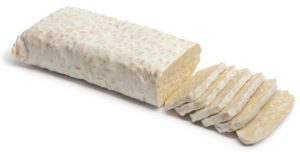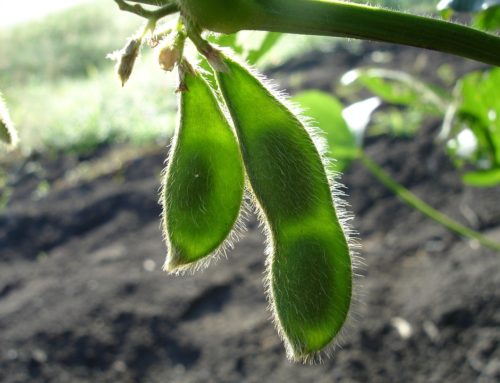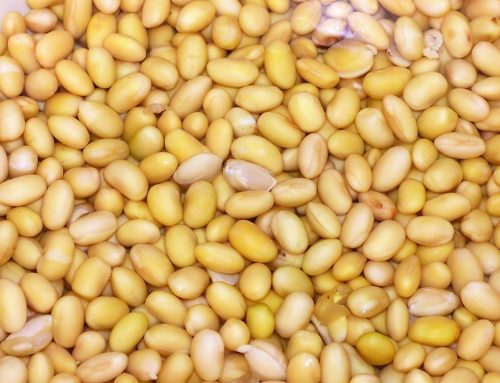Traditionally fermented soy is good for you: use only authentic soy sauce, natto, miso and tempeh
 Vegetarians often consider soy as a super food. Unfortunately, the health benefits of eating products based on soy are highly controversial. This is partly because soy is a bean: beans are only nutritious for humans when they are properly prepared.
Vegetarians often consider soy as a super food. Unfortunately, the health benefits of eating products based on soy are highly controversial. This is partly because soy is a bean: beans are only nutritious for humans when they are properly prepared.
Traditionally fermented soy products extract the best from the bean and to a large extent reduce the ‘anti-food’ present in the raw soy bean. Protein inhibitors inhibit the production of protease and trypsin. Fermentation disables the protein inhibitors in the soy bean. A raw soy bean contains 4.8 mcg protein inhibitors per 100g; traditional natto, miso and soy sauce barely retain any protein inhibitors. Fermentation also reduces the presence of phytates, which inhibit the absorption of minerals to some extent. Fermentation increases the level of vitamins B and K in soy as well as antioxidants. And fermentation of soy means less intestinal problems, bloating and flatulence.
Warning regarding modern soy-based products, such as tofu, soy milk, soy cheese, soy in baby food, soy chunks, isolates, soy flour, soy burgers, etc.
Americanised soy products are not traditionally fermented and are not, therefore, a super food. These soy products are usually a waste product of the American soy oil industry and rather than offering benefits for your health, they provide food technologists with huge opportunities for profit.
These ‘modern’, non-fermented soy products are obtained using extreme heat and pressure, chemical solvents, strong acids or strong alkaline substances, extrusion and other harsh methods: technological marvels but not without drawbacks. These modern waste products can contain harmful substances as a result, such as nitrosamines (from nitrate created by combining acids with high temperatures during manufacture: carcinogenic), lysinoalanines (cross-linking between lysine protein and alkaline: renal failure), heterocyclic amino acids (through high temperature extrusion and pyrolysis, which is decomposition at elevated temperatures: carcinogenic), excitotoxins (glutamate and aspartate are formed through hydrolysis of soy proteins: harmful effects on the brain and behaviour), chloropropanols such as 3-MCPD and 1.3-DCP (created by alkaline hydrolysis: liver cancer), furanones (by cooking at high temperatures: mutagen), hexane and other solvents, such as acetone, benzene and chloropropham. These soy products are junk food!
Avoid tofu, baby food and supplements based on soy (soy isoflavones and lecithin and protease inhibitors), soy sausages, soy burgers, soy milk, TVP (textured vegetable protein, also known as soy chunks), cheap supermarket soy sauce, soy ice-cream, HP (hydrolysed protein), SPI (soy protein isolate), SPC (soy protein concentrate) and deodorised or partially hydrogenated soy-based oil.
Soy is not, and never has been, an Asian food
The health link between soy and Asia is not based on fact. Soy was never an Asian food. Until the Second World War, Japanese, Chinese and Asian people only occasionally included soy in their diets. After that, the Japanese were forced to adapt to the American diet. GM soy, produced using American food technology, was introduced compulsorily and consumed on a massive scale, mainly in the form of oil.
The former Indonesian president, Sukarno (1945-1967), warned that his compatriots “were no tempeh nation”. During the Dutch occupation, tempeh caused a furore among the poor population of the country, as Indonesians had eaten fermented coconut oil cake for centuries.






